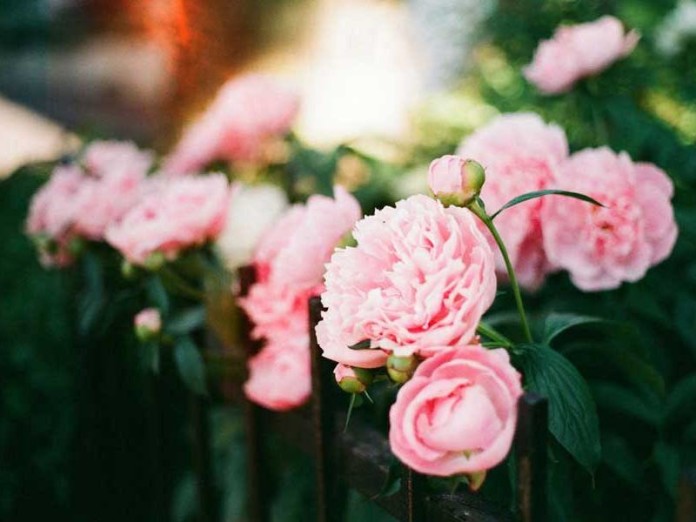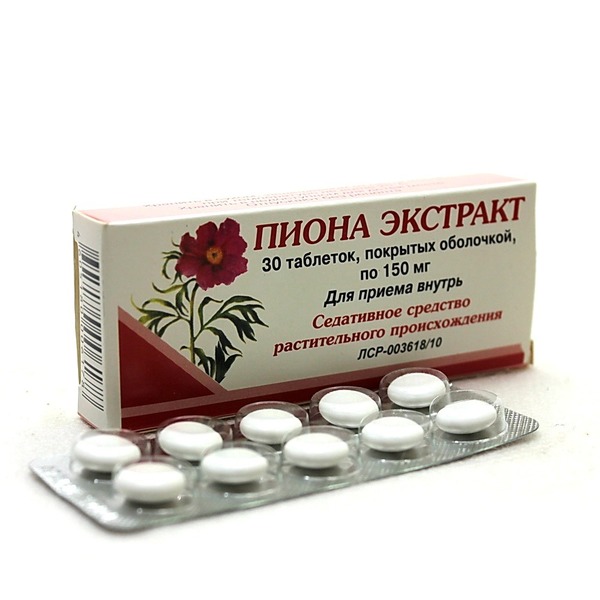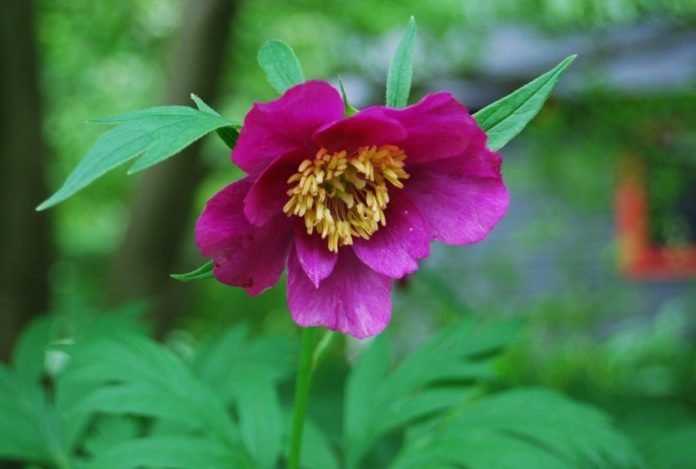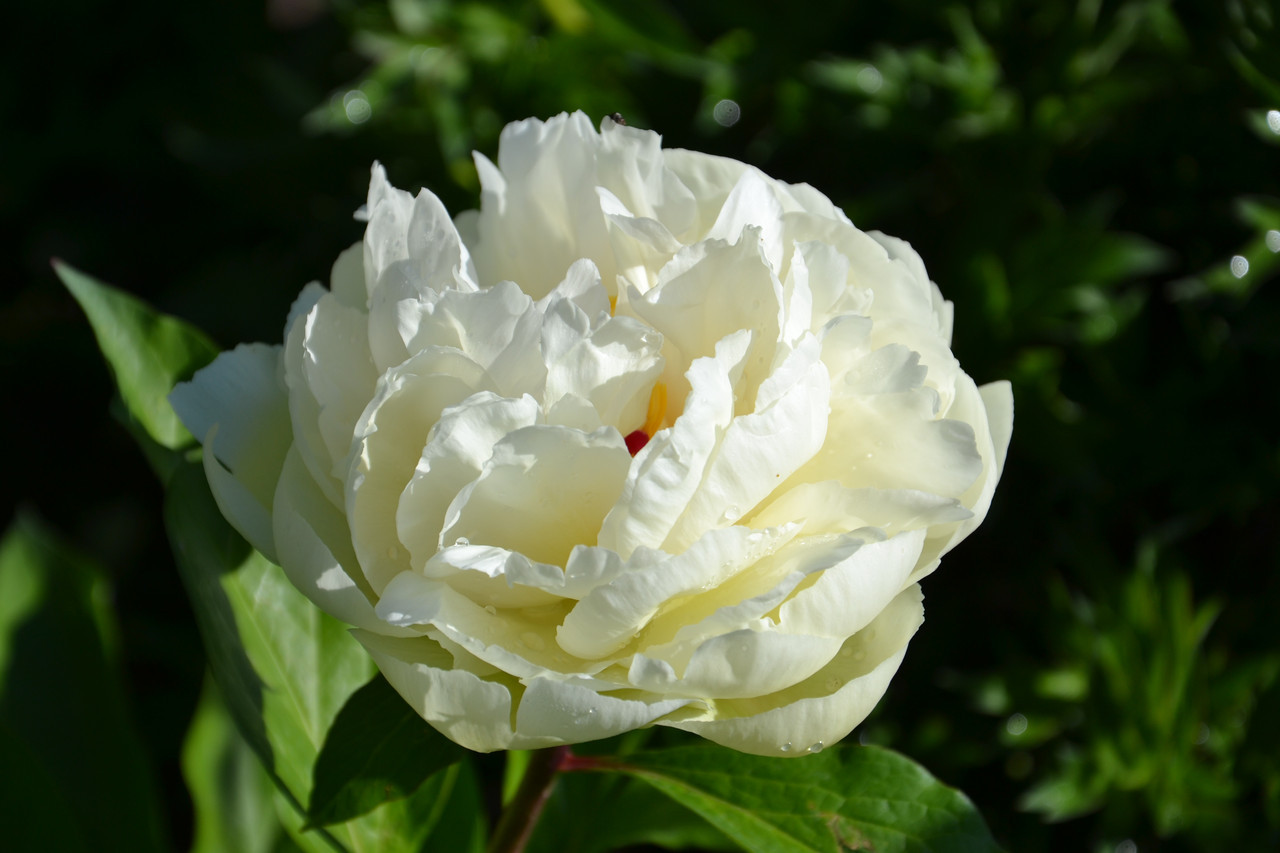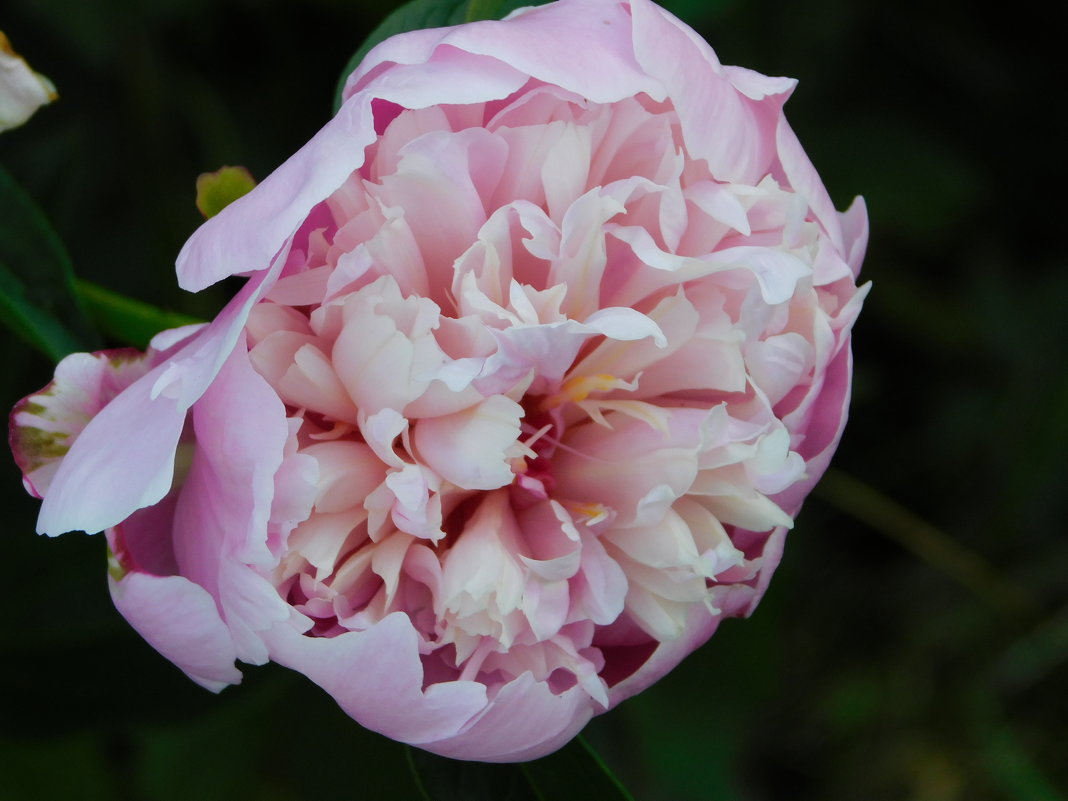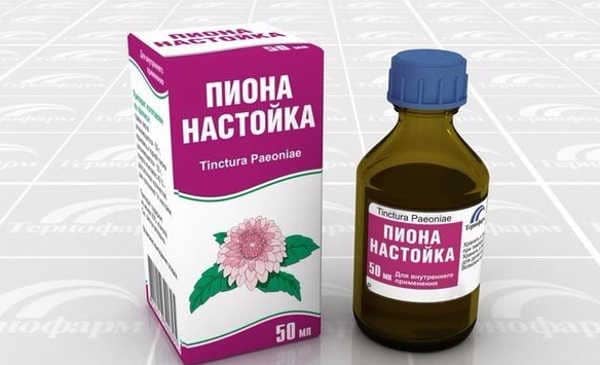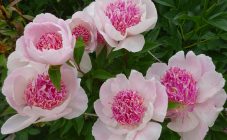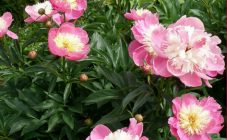Content:
Luxurious peony has been considered the king of flowers since ancient times. Its lush, spectacular bloom is always eye-catching, and its marvelous aroma fills the gardens with a unique fragrance. Even artists have painted beautiful peonies on their canvases more than once. And the royal palace halls were decorated with live bouquets and images of these flowers. No matter how much time passes, they will always arouse admiration.
Peonies: everything about them
Peony is the only genus of herbaceous perennial that belongs to the Peony family. It grows like a shrub or semi-shrub. Bushes are large, symmetrical, branchy, branchy. One plant can have multiple stems. Their height (50 cm-1 m), deciduous species reach 2 m.
Peony rhizomes are large, powerful, thickened, cone-shaped. Every year, new adventitious roots appear under the replacement buds. Old specimens thicken and turn into tubers. They deepen by almost a meter, grow in width (50 cm) from the central part of the bush. Renewal buds are located at the very bases of the shoots. The branches of the bushes dry up completely before winter, and in the spring they revive again.
The leaves are alternate, pinnate, separate, sometimes trifoliate. The plate consists of 3 parts, and each is attached to its own petiole. The colors of the leaves can be dark green, purple, occasionally gray. In the spring, they are purple, in the summer they turn bright green. In autumn they become yellow, crimson, brown. The leaves remain on the branches until late autumn.
Peonies are subdivided into tree-like, herbaceous species. Flowering time: early, medium, late.
Flowers of herbaceous peonies can be:
- terry;
- non-double;
- semi-double;
- anemone,
- Japanese.
Peony: flower meaning
The Greek name of the plant is Paionios. This word means "healing", "healing".
There is also an interesting legend associated with the ancient mythology of the Greeks. She tells that once upon a time (in the distant times of the Olympic gods) the doctor Peon lived. By the way, a disciple of Asclepius (the god of healing - Aesculapius). He was so successful in this science that he surpassed the teacher himself. Once the mother of Apollo - Lethe - gave him an outlandish plant. Using it, he cured the god of the underworld, Hades, from the wounds he received in the battle with Hercules. Then Aesculapius was seized with envy. He decided to destroy Peon. Hades, learning about this, saved him, turning him into the most beautiful flower.
There is another version of the meaning of the peony flower. The name comes from the name of the Thracian town of Peonia of the same name. It is located on the Balkan Peninsula, where these flowers grow wild literally at every step.
Where do peonies flowers grow?
Today, the natural habitat of peonies is the territory of Eastern and Western Siberia, Yakutia (western region), Transbaikalia (eastern part), Kola Peninsula, Caucasus, Far East, European regions of Russia (in the forest belt). They also grow in Europe, East Asia, North Africa, and the USA. They are cultivated everywhere in parks, squares, gardens, dachas.
Plants love sunny, open, well-lit forest edges, meadows, glades, glades. They grow well in poorly shaded areas.
They usually bloom in late spring (late May to late June). This flowering time is called the peony season. Although the dates are sometimes shifted due to weather conditions. The duration of flowering depends on the variety, air temperature, soil and humidity. Single-flowered species bloom for 8-16 days. Varieties with lateral buds are 18–25 days old. In general, it turns out 2-3 weeks.
Storing and using peony:
- For medicinal purposes, flowers, leaves, stems, roots are used. The aboveground parts are harvested during the flowering period (May-June). Most often, the roots are dug out at the same time.
- The rhizomes are washed under running water from the ground. Dried in a barn, under a canopy, in the attic. The herbaceous part is also laid out or hung there. A dryer can be used. The admissible temperature is 45-60 ° С.
- Dried raw materials are placed in paper bags, fabric bags and sealed. Peony dry extract is stored for no more than 3 years.
Popular peony varieties
There are 5000 varieties of peonies in the world. Some specimens have medicinal properties. They are used in traditional medicine.
Tree peony
Deciduous shrub that has woody shoots. The height of the bush is 1–1.5 m. In the southern regions there are plants up to 2.5 m high. Delicate tree-like peonies are perennial bushes that have been growing in one place for 100–150 years. They like sunny, light, well protected areas from the winds.
Flowers (30–70 pcs.) Are large, 25–30 cm in diameter, cup-shaped, spherical. They are white, pink, yellow, red, purple in color.
Peony yellow
It grows mainly in China. This is a shrub or semi-shrub. Reaches a height of 1 m. Flowers are solitary, 5-10 cm in diameter, golden, copper-yellow. The petals are rounded, elliptical. Peony blooms in June.
Peony red
The stem is branched, the rhizome is short. The leaves are large, serrated. Height 1 m. Flowers are large, solitary. They can be dark red, pink. The plant belongs to the Buttercup family.
Narrow-leaved peony (thin-leaved)
The bush has bare branches. Their height is 50 cm. The rhizome is pineal, elongated. The flowers are bright red, decorative, small, 8-10 cm, regular, located on the tops of the stems.
Herbaceous parts of plants, pineal rhizomes are used for medicines.
Medicinal peony (ordinary)
Perennial. Its height is 55-85 cm. The stems are rough, the leaves are compound, separate. The flowers are large, red, pink, white.
Mountain peony (spring)
The rhizome is almost horizontal, flattened. The stem is single. Its height is 30-50 cm. In spring it becomes slightly ribbed, acquires a red-violet color. The flower is large, the corolla is light cream (beige), occasionally it is white, pink. This peony has the same scent as poppy. Also listed in the Red Book. He lives in the south of Primorye, in East Asia, as well as in Japan.
Peony evading (Maryin root)
Perennial, herbaceous plant more than 1 m in height.Grows in Siberia, on the European territory of Russia. The rhizome is powerful and strong. It blooms with red-brown inflorescences. The stems are erect. They have 3-5 large leaves, the length and width of which is 30 cm. The beautiful flowers of large peonies, 10-18 cm in diameter, have 5 petals.
Differences between tree peony and herbaceous
They can differ in the following properties:
| Tree peony | Herbaceous peony |
|---|---|
| Considered a shrub because it has a hard, tree-like stem | The stem is soft, herbaceous. The plant is not considered a shrub |
| Height 1.5-2 m | Height 1 m |
| It is not necessary to trim the first flowers to induce leaf growth. | Pruning of primary flowers should be done so that the leaves can build up a green mass. |
| Flower diameter 25-30 cm | Flower diameter 20 cm |
| Has 4664 varieties | Has over 500 varieties |
The best varieties of peonies There are also hybrid peonies, which are described as showing signs of tree and herbaceous flowers. Both varieties tolerate winter well.
Among gardeners, the most common:
- Sarah Bernhardt;
- Shirley Temple;
- Duchesse de Nemours;
- Sisters Kizo;
- Coral Altar;
- Green Jane;
- Pastel Splender;
- Bartzella;
- Anastasia;
- Elsa Sass;
- Peony ballerina;
- Coral Charm is an orange peony.
Composition and properties of peony (evading)
The plant contains:
- essential oil;
- starch;
- glycosides;
- tannins;
- Sahara;
- flavonoids;
- alkaloids;
- organic acids;
- glutamine;
- arginine;
- resin;
- ascorbic acid;
- micro and macro elements (iron, copper, aluminum, chromium, calcium, magnesium).
Medicinal qualities:
- pain relievers;
- antispasmodic;
- anti-inflammatory;
- diuretic;
- diaphoretic;
- disinfectants;
- hemostatic;
- decongestants;
- tonic;
- strengthening;
- choleretic;
- expectorant;
- anticonvulsants;
- sedatives;
- antineoplastic;
- astringents;
- hemostatic.
The benefits and harms of a peony
Since peony is a medicinal plant, you need to use it after consulting a doctor:
- The plant has a good effect on the immune system, strengthens it. Thus, it protects the body from various infections, viruses, and accelerates recovery.
- Peony-based drugs are used in chemotherapy, they reduce radioactive radiation.
- Peony medicines have excellent bactericidal properties.
- In China, the peony is included in anti-tumor drugs.
- The plant can be harmful if the exact dosage of the drug is not followed.
Peony treatment:
- You can make an infusion that will improve appetite, digestive process, ease the course of jaundice, menopause symptoms). To do this, pour boiling water (600 ml) crushed roots (1 tsp). Insist for 30 minutes. Take 10 minutes. before meals 2-3 times a day.
- Alcohol tincture. Take a jar (500 ml), which is filled with plant flowers, filled with vodka or alcohol. Insist for 2 weeks, and then rub it into sore joints.
- For the treatment of stomach cancer. Dried roots are poured with boiling water (10 parts of water, 1 part of raw materials). Insist 2 hours. Take 100 ml 3 times a day.
- In addition to decoctions, infusions in the treatment of various diseases (gout, rheumatism, bleeding, stroke), they used to take small pieces of the root (the size of a pea) 3 times a day after meals. They were swallowed and washed down with water.
- You can also use ready-made pharmaceutical preparations of peony: tinctures, tablets, syrups.
Contraindications:
- individual intolerance;
- renal, liver failure;
- pregnancy;
- lactation period;
- age up to 12 years.
In addition to flower treatment, they love to decorate rooms, and given the importance of peonies in Feng Shui. Flower arrangements look gorgeous and refresh the interior. To prolong their flowering, experienced florists recommend choosing closed peonies. A vase of flowers will even decorate a desktop, cheer up, and caring for them is not at all difficult.

